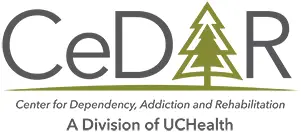SOCIOLOGY AND PUBLIC HEALTH
We often discuss the primary health consequences attached to tobacco use. It is important to acknowledge the second-hand toxicity connected to smoking, causing severe impacts on your loved ones. Second-hand smoke will affect your loved ones. It’s true even if you think you arranged good boundaries such as only smoking outdoors or out of the home.
Basic Health Consequences
Some of the examples of health consequences attached to second-hand smoke include the following:
- Respiratory Disease – Asthma, COPD
- Heart Disease
- Lung Cancer
- Low Birth Weight for Pregnant Mothers
- Sudden Infant Death Syndrome (SIDS)
Thousands of Deaths
According to data from the World Health Organization, second-hand smoke is the cause of 3400 lung cancer deaths, 46000 heart disease deaths, 430 infant SIDS deaths, and 200000 cases of childhood asthma each year in the United States. This means that the innocent bystanders to someone’s smoking are victims of the ambient tobacco smoke. The smoker is almost always immediate family or children.
- 3,400 Lung Cancer Deaths
- 46,000 Heart Disease Deaths
- 430 SIDS Deaths
- 200,000 Cases of Asthma
People Smoke Anyway
Interestingly, this data never seems to be shocking to anyone who smokes. Especially with the effect on children and teenagers, most parents in treatment seem very aware of these above statistics. That speaks to the severity of tobacco use as an addiction. Even amidst these severe risk factors for toxicity within a family, the person keeps on smoking. Continued use of a substance amidst significant consequences or harm is one of our top four core traits to define an addiction. This rings true with that of tobacco use disorder.
Family Support of Quitting
By understanding the health tolls on your loved ones, most likely that of close family (although this could also include workplace environments, albeit somewhat rare these days with public tobacco laws), we need to garner family support to fully quit tobacco. What are some of the ways to build a supportive network for quitting?
We need to start with communication. Defining the problem as an addiction and stating a commitment to quit tobacco seem to be two of the strongest ways to build accountability in your quit attempt. In a sense, you are ‘burning the bridges’ back towards tobacco, even if this is just in a mild way. It is always possible to resume smoking, but declaring your intent to quit helps increase your chances.
Define a Quit Date
This declaration also is motivating to yourself. Much of the initial goals of tobacco cessation programs in health centers are to help a person define a quit date. This emphasis helps you build a vision of quitting tobacco in that you are imagining being tobacco-free the days following that quit date. This may also seem daunting at times, but it is an important start for you along a change process. Any change process is incredibly hard, but we need to start somewhere, and defining a quit date works well to jumpstart things.
If you are a tobacco user along with your immediate loved ones, the second-hand smoke is moving back and forth between you. From a common sense point of view, you will need to quit together. Of course, it is possible for one person to quit and the other to continue tobacco use, but a mutual commitment to quit tobacco seems so sensible and supportive of recovery. This also will help cut down on significant triggers to smoke within the home as you won’t have tobacco just a second away.
Positive Motivation
Family support can also help with positive motivating factors. The use of rewards in a change process is very helpful and may get better results than that of consequences if you continue to use. Examples of rewards could be in the form of earned prizes (going out to a nice family dinner), abstract prizes (spending time together in recognition of your quit attempt), or other health-related feedback and praise. Things like a quit calendar on the fridge can be supportive and motivating, especially if young children are part of your motivation to quit and they know that smoking is bad for you. These children have a great ability to be supportive (or drive your guilt if you keep smoking).
Conclusions
The second-hand toxicity of tobacco is life threatening and causes significant harm to your loved ones. Increasing your child’s chance of dying from SIDS or developing asthma is just terrible. Quitting tobacco removes those risk factors so that your children or other loved ones can have the greatest chance of health success as possible. We can also actively incorporate your close family into your quit attempt through building motivation, setting a quit date, and designing a reward structure for positive efforts and results. Your family wants you to quit tobacco – let’s use them to strengthen your success rate!
Read more CeDAR Education Articles about Sociology and Public Health.
